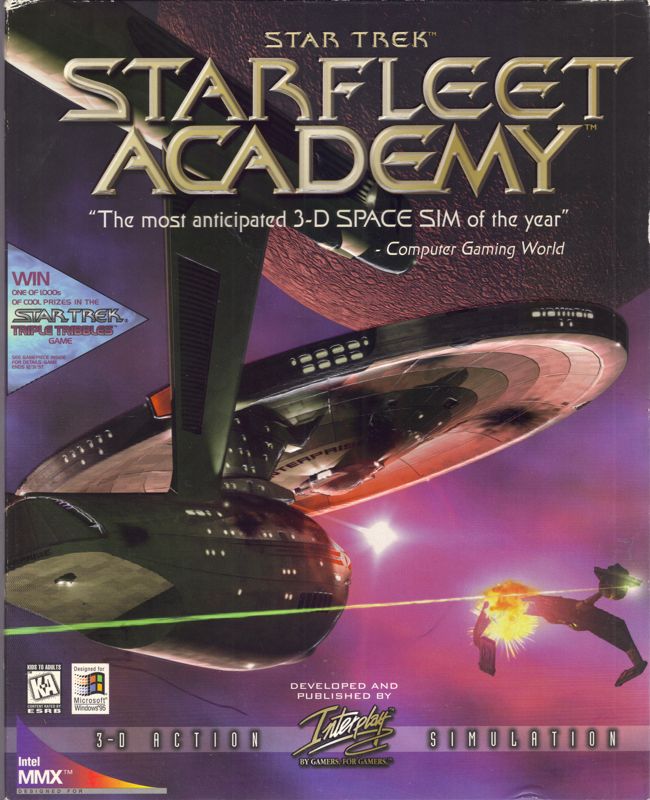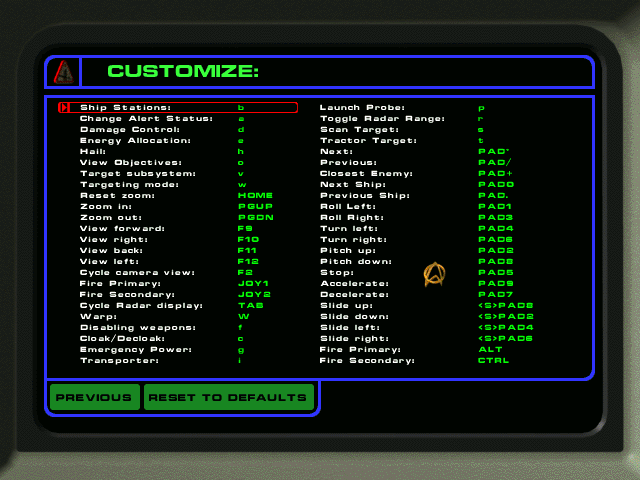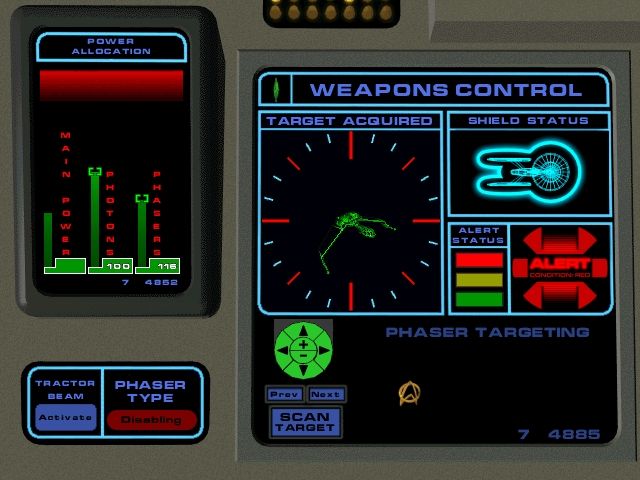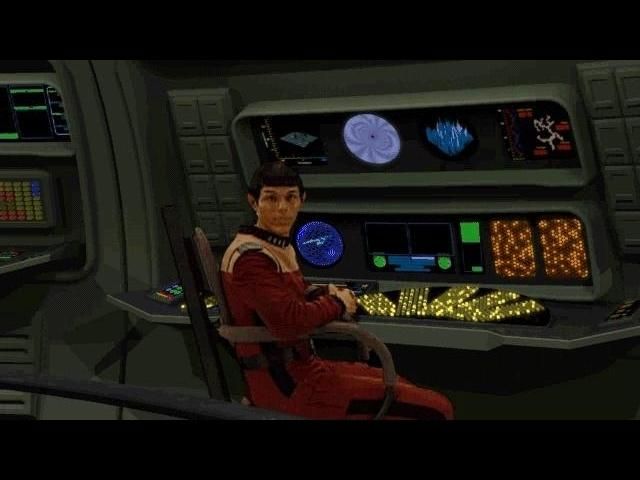Retro Replay Review
Gameplay
Star Trek: Starfleet Academy places you in the captain’s chair from the very beginning, tasking you with proving your mettle in both theoretical exams and live-action starship engagements. The training simulations mirror the rigorous curriculum of Starfleet’s finest, blending knowledge quizzes with combat drills to ensure you’re ready for anything the galaxy can throw at you. Each mission tests a different aspect of your command skills, from precise maneuvers in asteroid fields to swift, decisive dogfighting against Klingon and Romulan vessels.
The core gameplay adopts a cockpit-first viewpoint reminiscent of the Star Wars X-Wing/TIE Fighter series, delivering a full-flight dynamic experience that caters to both simulation enthusiasts and arcade-style pilots. Controls are intuitive yet deep, offering fine-tuning of thrusters, shields, and weapon systems. You’ll find yourself mastering warp and impulse drives, adjusting your tactical display, and coordinating power distribution mid-battle, creating moments of high-stakes intensity.
Each mission starts with a lecture-style briefing, allowing you to review objectives, survey potential threats, and get tactical insights from Starfleet instructors. This reduces surprises and helps players strategize before they launch. The game progressively ramps up in difficulty, forcing you to adapt to new enemy tactics, emerging Vanguard rebellions, and unexpected plot twists. Preparation and quick-thinking truly feel rewarded with successful mission outcomes.
Your crew—Sturek, M’Giia, Robin Brady, and Corin—bring personality and support to the bridge. They chime in with status updates, tactical suggestions, and occasional levity, reinforcing the camaraderie that defines Starfleet’s ethos. Each member’s unique specialty can tip the balance in challenging encounters, highlighting the importance of teamwork in the heat of interstellar conflict.
Graphics
Given the era in which Starfleet Academy launched, its graphics remain surprisingly robust and immersive. The cockpit views are crisp, with detailed instrument panels, authentic Starfleet designs, and clear HUD elements that keep you informed without blocking critical sightlines. Every button press and control flicker is faithfully rendered, making you feel as though you’re truly commanding an advanced starship.
Exterior ship models capture the iconic silhouettes of Federation cruisers, sleek Klingon warbirds, and the sinister contours of Romulan vessels. Textures on hull plating, engine glows, and phaser beams pop against the backdrop of starfields, nebulae, and planetary objects. The lighting effects during warp transitions and battle sequences lend a cinematic flair to engagements, even if polygon counts are modest by modern standards.
Cutscenes woven into briefings feature digitized clips of William Shatner and Walter Koenig, lending authenticity and nostalgia to the experience. Though grainy compared to today’s HD videos, their performances effectively ground the narrative and remind players they’re part of a larger Star Trek universe. Visual transitions between the bridge, tactical maps, and mission debriefs are smooth, maintaining immersion.
Environmental variety further enriches the graphical palette. Missions take you through asteroid belts rife with floating debris, nebula clouds that obscure sensors, and space stations under siege. Each setting feels distinct, encouraging you to adjust your tactics–whether picking off targets in tight quarters or engaging in long-range phaser duels across open space.
Story
At the heart of Starfleet Academy’s story is David Forester, an earnest cadet whose lineage and determination make him both privileged and under pressure. His journey from classroom to command bridge mirrors the player’s own progression, weaving personal stakes into broad-scale galactic politics. The narrative threads of Klingon clashes, Romulan subterfuge, and an unexpected Vanguard rebellion keep the plot dynamic and engaging.
Lecture-style briefings double as storytelling devices, delivered by holographic instructors or seasoned officers like Admiral Shatner’s character. These expository segments not only inform mission goals, but also flesh out motivations on both sides of the conflict. Rebel Vanguard factions seeking independence add moral complexity to your assignments, prompting you to consider the values of duty, justice, and Federation diplomacy.
Character interactions are a highlight—M’Giia’s no-nonsense tactical acumen, Sturek’s dry wit, and Robin Brady’s unwavering optimism turn your bridge crew into a true team. Occasional voice lines and status updates reinforce your relationships, making victory feel communal rather than solitary. These human touches elevate the story beyond simple “target destruction” objectives, reminding you what Starfleet truly stands for.
The pacing is well-balanced, alternating high-octane dogfights with quieter moments of strategic planning and dialogue. Plot twists—such as betrayals within the Vanguard or covert Romulan maneuvers—land effectively, ensuring that even veteran space sim fans will be kept on their toes. Overall, the storyline achieves a fine blend of fan service and original content, appealing to both Trekkies and newcomers alike.
Overall Experience
Star Trek: Starfleet Academy stands out as both a testing ground for aspiring captains and a loving tribute to the franchise’s legacy. The combination of rigorous flight simulation, richly textured environments, and narrative depth offers a well-rounded package that remains enjoyable decades after its release. Fans of tactical space combat will appreciate the balance between realism and accessibility.
While the learning curve can be steep—especially for those new to cockpit simulations—the game’s gradual difficulty scaling and informative briefings cushion the ascent. Players willing to invest time mastering the ship’s systems will find immense satisfaction in outmaneuvering Klingon warships or orchestrating fleet actions against a rebellion. Each triumph reinforces the notion that practice, preparation, and teamwork are vital in Starfleet’s demanding universe.
Audio design complements the visuals with authentic bridge ambience, dramatic musical cues, and voiceovers from beloved actors. Photon torpedoes whistle, shields shimmer under fire, and the iconic Star Trek score swells at key moments, all contributing to an immersive soundscape that heightens emotional investment.
In conclusion, Star Trek: Starfleet Academy offers a compelling blend of strategy, action, and storytelling. Its faithful adaptation of the Academy experience—complete with exams, lectures, and real combat scenarios—makes it a must-play for space sim enthusiasts and Star Trek fans eager to captain their own starship. The camaraderie of your crew, the thrill of first-person dogfighting, and the rich narrative tapestry combine to deliver an experience that still resonates with players looking to boldly go where few games have gone before.
 Retro Replay Retro Replay gaming reviews, news, emulation, geek stuff and more!
Retro Replay Retro Replay gaming reviews, news, emulation, geek stuff and more!









MW Stone –
John Reeves